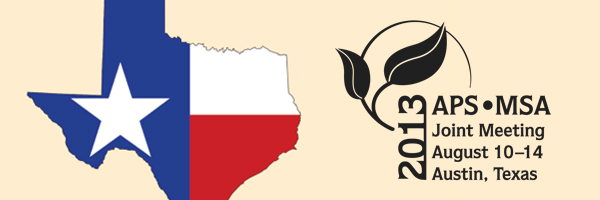APS Homepage
Back

Poster Session: Mycology
© 2013 by The American
Phytopathological Society. All rights reserved.
58-P
Phylogeny and haplotype diversity of three DNA barcodes in Puccinia emaculata causing switchgrass rust.
G. ORQUERA (1), C. D. Garzon (1), S. M. Marek (1)
(1) Oklahoma State University, Stillwater, OK, U.S.A.
Switchgrass rust caused by Puccinia emaculata can significantly reduce biomass yield and feedstock quality. Three other Puccinia species have been reported causing switchgrass rust, but are now considered synonyms of P. emaculata. This study used three “DNA barcodes”, ITS, TEF1a, and Btub, to assess the monophyly, genetic diversity and haplotype distribution of P. emaculata urediniospores collected from cultivated switchgrass grown in Iowa, Mississippi, Oklahoma, South Dakota, and Virginia. Barcodes were amplified and the PCR products subcloned and sequenced. At least 5 clones of each barcode were sequenced per spore collection. Phylogenetic analyses with each barcode strongly supported the monophyletic status of P. emaculata. Intraspecific variation among and within populations was observed. Barcodes differed in the number of haplotypes represented (ITS = 13; Btub = 24; TEF1a = 27) and their geographic distribution. Btub and TEF1a haplotypes displayed mostly local distributions; while ITS haplotypes were distributed either in multiple states or locally. Also, barcode haplotype diversity and distribution suggest prolonged propagation of urediniospores under growth chamber conditions may reduce the variability. Future studies will examine the genetic diversity, phylogeography, population structure, and pathogenicity variation within P. emaculata.